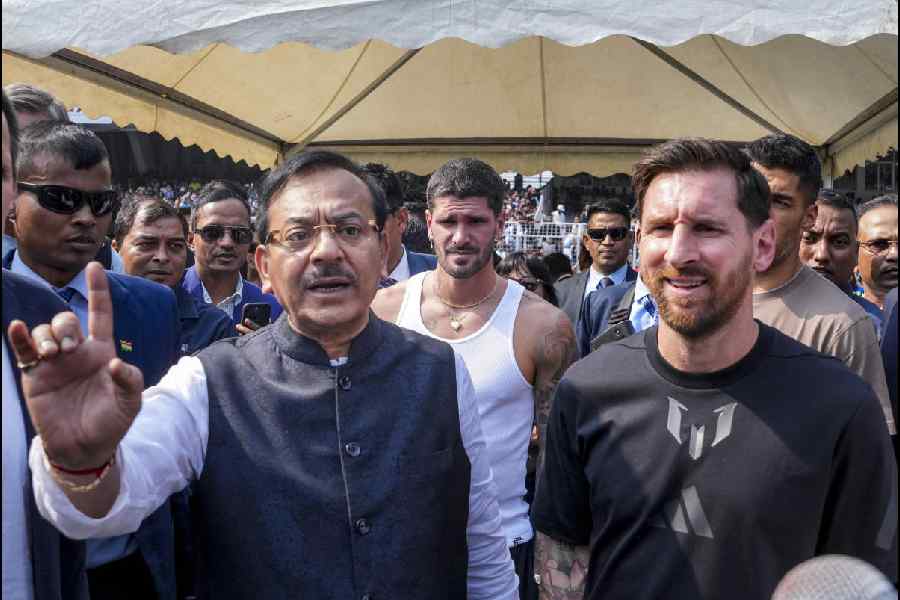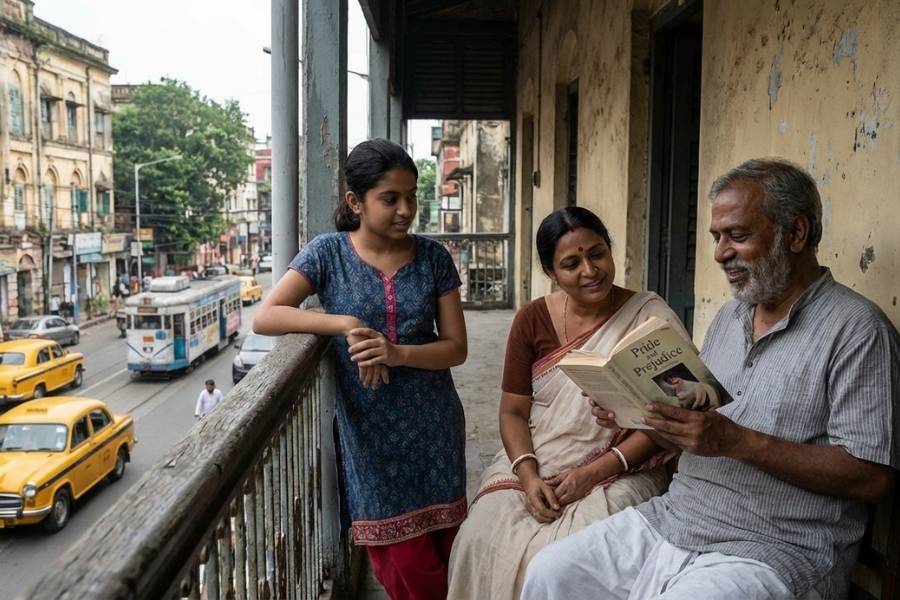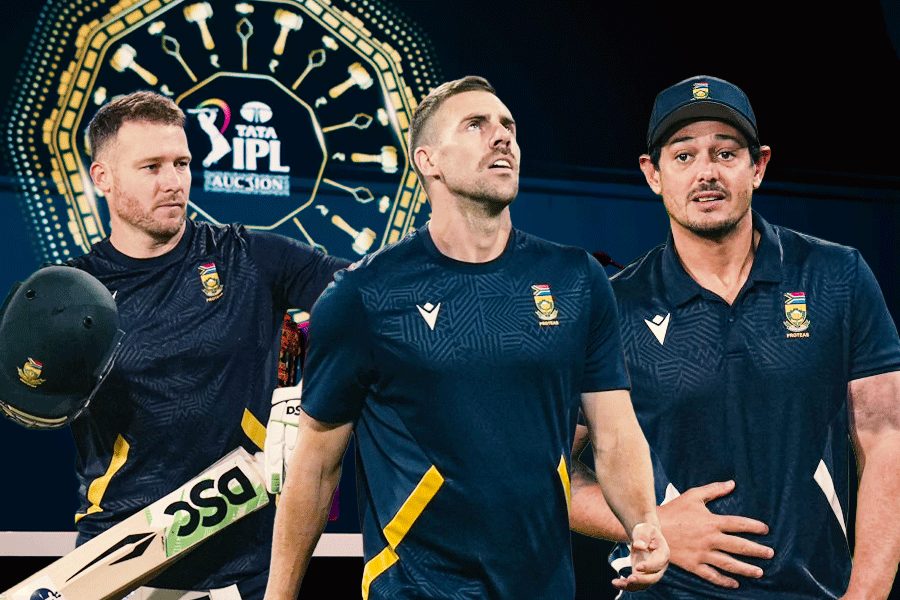
It was a packed press conference. The ballroom of a five-star hotel in the capital was dotted with several mini monitors and headsets. Peter Bithos' voice boomed with confidence as he unveiled HOOQ to a room packed with journalists. "This is a sure shot way to combat piracy and give the user premium content at a price," he said while unveiling HOOQ in India. Bithos asked everyone present in the room to log on to the mini screens and sample the best of the movies that are on offer.
Half a decade ago, if Bithos, chief executive officer (CEO) of HOOQ, had said that he wanted to sell Hollywood movies in India over the Internet, many would have laughed at him. Satellite television then was at its peak, with channels such as MTV, Zee and HBO offering viewers their daily dose of entertainment. Linear TV or watching a television programme at the particular time it was telecast and on the particular channel it was presented, was the norm.
Not anymore.
TV viewing as we know it is set to change.
Singapore-based HOOQ is being touted as Asia's answer to the American online streaming service Netflix. It launched its premium video-on-demand (VOD) service in India last week, its third destination after Philippines and Thailand. "This is the first service in India to offer a scale catalogue of the best of Hollywood and local content," Bithos says. A joint venture among Singaporean telecom giant Singtel, Sony Pictures Television and Warner Bros, HOOQ will offer over 15,000 Hollywood blockbusters, television soaps and popular Indian shows for a monthly subscription of Rs 199 which can be streamed on five devices.
One outcome: today's television sets are going to become obsolete - well if not immediately, certainly in the future. And they are going to be replaced by over-the-top content (OTT) or the delivery of audio or video over the Internet without any involvement of a multiple system operator in control or distribution of content. You would no longer need to watch your entertainment shows on your telly, but through OTT platforms such as HOOQ, Ogle, YouTube, Hotstar and Spuul, to name a few.
Simply put, linear TV may soon be replaced with Internet TV. And shows and movies will be offered over the Internet through live streaming and VOD.
With India becoming the third largest Internet market, after China and the US, and one of the fastest growing smartphone markets in the world, OTT players have started making a beeline here. Last year, Singapore-based Spuul launched in India - both as an app and on the Web - and it offers Hindi and regional content. "For free movies or serials, the advertisers pay for the reach. If the customer wants ad-free, on-demand experience, he pays," says Rajiv Vaidya, CEO, Spuul India. The company has recorded 2.5 million app downloads and five lakh subscriptions since its launch.
Other OTT players like ErosNow, BoxTV and BigFlix are also in the race to capture digital audiences. ErosNow has 14 million registered users worldwide of which 10 million are from India. According to reports, US-based Relativity Media and Bollywood television network B4U, backed by steel baron Lakshmi Mittal, have struck a $100 million joint venture to launch "RelaTV", a digital-streaming tech platform, besides producing films and TV shows.
Then there is YouTube, the largest and the best aggregator of video content, which has several subscription-driven channels with millions of users. One example is Arunabh Kumar's "tvfvideos" which has over 1.5 million subscribers and 12 flagship shows. Kumar, founder and CEO of TVF Media Labs, a content creation company, took everyone by surprise when he released a Hindi movie online. In February, the 33-year-old, known in the online world for his satirical videos under the brand The Viral Fever (TVF), launched a new portal tvfinboxoffice.com for "qualitatively curated" movies and released Sulemani Keeda on it. "The numbers took us by surprise as this movie had a theatrical release too. We had expected to sell 5,000 tickets, but around 50,000 people paid to watch the movie," Kumar says.
Last year, Pritish Nandy Communications (PNC) Ltd announced Ogle, an online streaming media product that will offer the latest English and Hindi TV shows, movies, music and events in real time. Ogle also plans to offer Indie cinema, regional content and dubbed international content. "We have a new generation that already consumes entertainment differently. Hopefully, they will be the harbingers of change. Ogle will offer them content they want at their convenience - anytime, anywhere and on any device of their choice," says Pritish Nandy, chairman, PNC. However, the company is yet to work out the subscription model and delivery mechanism.
According to consulting firm PricewaterhouseCoopers (PwC), mobile Internet TV is one of the biggest growth areas in India and a third of smartphone users are watching TV on their devices. In 2012, PwC had forecast 176 million OTT viewers in India by the end of 2015, generating revenues of $552 million.
Predictably, all the top channels such as Star, Sony and Zee have an online platform now. "The broadcasters have decided that if they are going to be cannibalised they should also utilise the opportunity. Since they have the content, it makes perfect sense to offer it beyond linear television," says Sridhar Pai, vice-president, Asia Pacific, Dataxis, a global firm that tracks the telecom, TV and media businesses.
When Zee Entertainment Enterprises Ltd (ZEEL), one of the pioneers in satellite television, launched Ditto TV in 2012, it became the first OTT TV distribution platform in the country. "The next big thing in digital is about mobility and truly personalised seamless experiences," predicts Manoj Padmanabhan, business head, Ditto TV. Currently hosting 21 channels, Ditto TV has partnered for content with other broadcasters such as Multi Screen Media (Sony Entertainment Television), TV Today Network, and the BBC. "Niche cinema and TV shows have become a popular genre on Ditto TV, along with devotional channels," says Padmanabhan.

The market potential for online content viewing is huge. A May 2013 report by comScore Inc., a digital market research and audience measurement agency, said total online video consumption in India doubled in the past two years to 3.7 billion videos a month, putting the value of the online advertising market at $375 million.
"Increasingly, people are opting for alternate avenues to consume content and television is no more the first screen option," Padmanabhan says. Not surprising that in February, Star India launched Hotstar - a mobile app that streams content from its own network. Sony Entertainment Television too has launched a similar service called SonyLiv.
According to Shailesh Kapoor, CEO of Ormax Media, a Mumbai-based industry tracker, the "second screen" phenomenon is on the rise. "The availability of affordable smartphones and tablets has aided video content viewing through the Internet," Kapoor says. As the revenue models for these platforms will take another two to three years to evolve, the platform providers for the moment are building their businesses around subscription revenues.
So is communal TV viewing at home going to be a thing of past?
"Not immediately. But as individual spaces are getting well-defined, personalised entertainment is becoming an every day reality," Pai says. That the subscriber can pick and choose, pay and watch, on TV or mobile, has become the key driver. "Till now big bundles of channels were being sold to subscribers. But with options such as ours, you pay a nominal fee for premium content and access a whole lot of freebies as well," says Vaidya of Spuul.
That said, television sets and set-top boxes are not going to be thrown out anytime soon. According to consulting firm KPMG, the number of TV households in India increased to 168 million in 2014, implying a TV penetration of 61 per cent. In the same period, the number of cable and satellite (C&S) subscribers increased by 10 million to reach 149 million. And DTH (direct-to-home) service providers are wooing their customers through Internet as well. Airtel Digital TV offers On Demand TV through the Internet and its Pocket TV is a mobile app which allows customers to watch TV on the move.
In the battle between TV and OTT, content will be the game changer. "The main challenge for an OTT player is to provide original content," Pai says. Even though the size of the Indian TV content production industry is pegged at Rs 30 billion, excluding news, animation and sports, industry trackers maintain it is the toughest challenge. "We know from our research how important creating content is," agrees Bithos of HOOQ. He should know. Netflix scored in the US with its original and award-winning shows like House of Cards and Orange is the New Black.
There are others impediments too. "There are challenges like bandwidth and the cost of Internet," says Padmanabhan. Data costs in India are high, 4G is yet to become a reality and 3G continues to offer patchy services.
But HOOQ is optimistic. "Large percentages of consumers in most developed markets pay for data and then for content from OTT services. We don't have any reason to believe that India is any different," says Krishnan Rajagopalan, chief content and distribution officer, HOOQ. The industry believes consumers will become paralysed by the choices and will pay for convenience. "That is what technology is all about. The promise of change," Nandy says.
So clearly, though television as we know it may not be dying just yet, it's certainly set to morph into something else. And one day, the TV remote - over which wars are waged now - may be as outdated as television antennas and gramophone records.
Now showing
- HOOQ: Hollywood, Bollywood, English and Hindi shows through subscription
- Spuul: Free and paid content in Hindi and regional languages
- Ogle: Movies, music, live events, in both English and Hindi
- BoxTV: VOD streaming, paid and free
- ErosNow: Hindi and Tamil movies through subscription
- Ditto TV: 21 channels in English, Hindi and regional languages
- Hotstar: An app offering Star TV programmes
The list is indicative, not exhaustive
Net effect
- India is the third-largest Internet market with 232 million users in 2014
- In 2014, there was 63 million new Internet users
- The Indian smartphone market grew by 55 per cent in 2014
- 65 per cent of the total Internet traffic comes from mobile devices
- India accounts for 7 per cent of YouTube’s overall users (70 million users in India)
Source: Mary Meeker’s Internet Trends 2015











